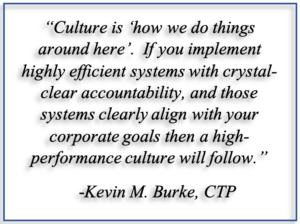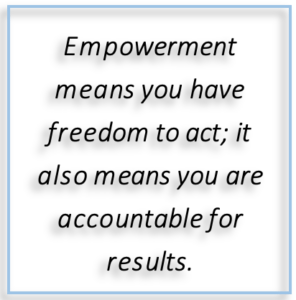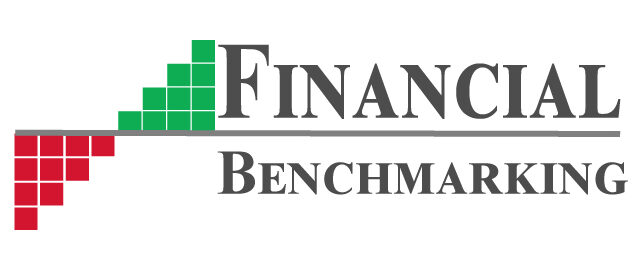Strategic planning is critical to business success. A good business plan should tell the reader where your organization came from and where it is going. Specifically, it should call out the goals of the organization and the specific steps detailing how you plan to achieve those goals. It is important that these steps (interim objectives) are clear as to timing and who is accountable for completing each one.
Foundational Elements
This group of the elements of any strategic plan is intended, as the name implies, to lay the foundation for any shifts in the cultural paradigm and action plans. It gives us a starting point in the case of the S.W.O.T. Analysis, Core Competencies, Market Scan and Current Market Position. It is a glimpse of the future and our ultimate goals as in the case of the Vision Statement and our Goals and Objectives. Perhaps most importantly, it provides both a set of directions and a filter through which we style and configure our behavior and decision-making processes as we advance toward our goals. This part of the plan is contained in the Corporate Values, Mission Statement, Planned Market Position and Action Plan sections.
Cultural Elements
 This part of the plan is perhaps the most important. It is only addressed briefly herein. However, it is imbued throughout this document and in the activities and changes it will spawn. Corporate culture typically deals with a company’s management style, inter-company communication, planning activities and motivating factors behind employee and management decisions and actions. We will be unusually intentional about addressing positive styles that, if adopted, will push us toward our goals faster and smoother. We will also be candid about addressing styles which we may still have a fondness for, as a part of our past, but which no longer push us in the direction of our goals. It cannot be stressed enough how important it is that our management adopt and embrace this “changed” culture. Management needs to become intentional about its behavior and thought processes. Good management leads by example.
This part of the plan is perhaps the most important. It is only addressed briefly herein. However, it is imbued throughout this document and in the activities and changes it will spawn. Corporate culture typically deals with a company’s management style, inter-company communication, planning activities and motivating factors behind employee and management decisions and actions. We will be unusually intentional about addressing positive styles that, if adopted, will push us toward our goals faster and smoother. We will also be candid about addressing styles which we may still have a fondness for, as a part of our past, but which no longer push us in the direction of our goals. It cannot be stressed enough how important it is that our management adopt and embrace this “changed” culture. Management needs to become intentional about its behavior and thought processes. Good management leads by example.
Action Elements
 This is the real meat of any corporate strategic business planning activity. Although the foundational and cultural elements of a business plan tend to be somewhat tedious, they are absolutely essential in applying our individual or collective thought process to each task. Our action plan uses a database or spreadsheet format, it can easily be split-up to a responsible individual level. In this way, each person has only the number of tasks that they can manage. The individual tasks within the plan all relate back to achieving one of the major goals that have been set for the company. In addition, each major goal relates to one of the company’s critical areas of concern called Strategic Issues. Some of these issues include increasing our revenues and profitability, company image, quality of our workplace environment, and improving and increasing information about our business for management.
This is the real meat of any corporate strategic business planning activity. Although the foundational and cultural elements of a business plan tend to be somewhat tedious, they are absolutely essential in applying our individual or collective thought process to each task. Our action plan uses a database or spreadsheet format, it can easily be split-up to a responsible individual level. In this way, each person has only the number of tasks that they can manage. The individual tasks within the plan all relate back to achieving one of the major goals that have been set for the company. In addition, each major goal relates to one of the company’s critical areas of concern called Strategic Issues. Some of these issues include increasing our revenues and profitability, company image, quality of our workplace environment, and improving and increasing information about our business for management.
Strategic Elements
Our strategic planning and facilitation work addresses the following areas:
- Mission Statement
- Strategic Vision
- Core Values
- Corporate Overview
- Board of Directors
- History
- Corporate Management
- Organizational Chart
- Strategic Relationships
- Customers
- Employees/Associates
- Other Strategic Partner
- Financial Partners
- Industry/Trade Organizations
 S.W.O.T. Analysis
S.W.O.T. Analysis
- Strengths
- Opportunities
- Weaknesses
- Threats
- Situational Analysis
- Economic
- Competitive
- Other Major Environmental Influences
- Core Competencies
- Strategic Issues
- Market Position
- Goals & Objectives
- Cultural Issues
- Evaluation & Follow-Up
For a white paper on strategic planning, click here.

